If you have an application that demands more voltage and amps than a single battery can provide, the next option that comes to your mind is to set up a multiple-battery system. After deciding to set up a multiple-battery system, you will also need to choose whether to connect your batteries in series vs parallel.
Connecting batteries in series and parallel are ways to increase the overall available energy (watt-hours), but they achieve this in different ways and provide different results. Therefore, choosing which is more suitable for you should be determined by the needs of your target customers.
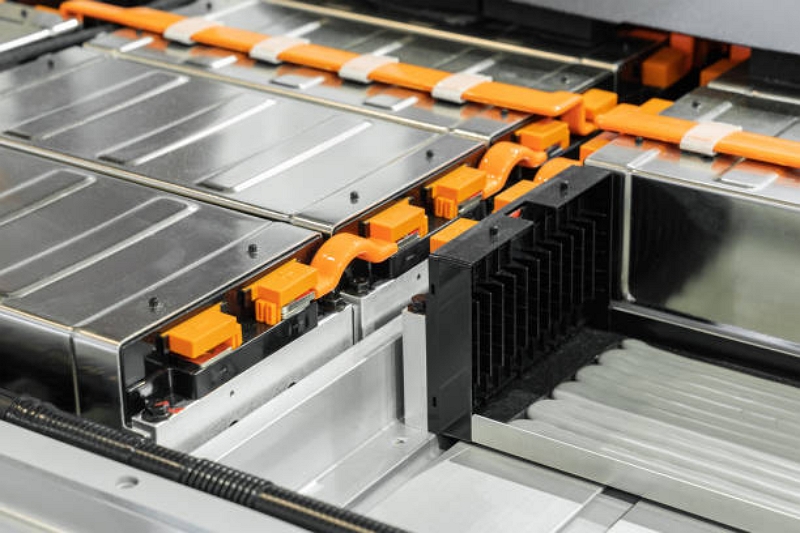
In this article, we will discuss wiring batteries in series vs parallel and which is suitable. Let’s begin with the classification of battery connection modes.
1. Classification of Battery Connection Modes: Batteries in Series vs. Parallel
A multiple-battery system can be connected in series or parallel, but it is crucial to understand the difference between the two before you proceed with the process. Both series and parallel connections help to increase the overall available energy (i.e., watt-hours), but they achieve this in different ways. Hence, the need to know the difference between wiring batteries in parallel vs series.
1.1 Wiring Batteries in Series
Great stability. A good lithium light EV battery passes the strict reliability test of important components, ensuring the stability of the whoBatteries are connected in series to increase the voltage while the amp-hour remains the same. For instance, two 12V 200Ah lithium batteries connected in series will provide 24V and 200Ah.
This connection method is proper when there is a need to increase the voltage to support applications requiring higher voltage. Also, wiring your batteries in series is easy to build and repair.
Before wiring your batteries in series, one critical thing to do is carefully check each battery’s voltage and ampere ratings. This is very important because mixing and matching batteries with different capacity ratings is dangerous and may eventually damage the batteries.
1.2 Connecting Batteries in Parallel
Parallel batteries are used when you need to improve the amp-hour while maintaining the same voltage level. Connecting batteries in parallel increase the amp-hour while the voltage remains the same. For instance, two 12V 200Ah lithium batteries connected in series will provide 12V and 400Ah.
Just like the series connection, checking the capacity rating of your batteries before you connect them is essential. Connecting batteries with different capacity ratings in parallel is dangerous and may eventually damage your batteries. Also, avoid mixing and matching new and old batteries together when connecting your batteries in parallel. The old ones will affect the new ones and drag them down.
In the next section, we will discuss the pros and cons of connecting batteries in series vs parallel.
2. Pros and Cons: Batteries Connected in Series vs. Parallel
Each of these methods of connection has its peculiar pros and cons. A thorough study of the pros and cons of wiring batteries in parallel vs series will guide you in choosing the most suitable one for yourself.
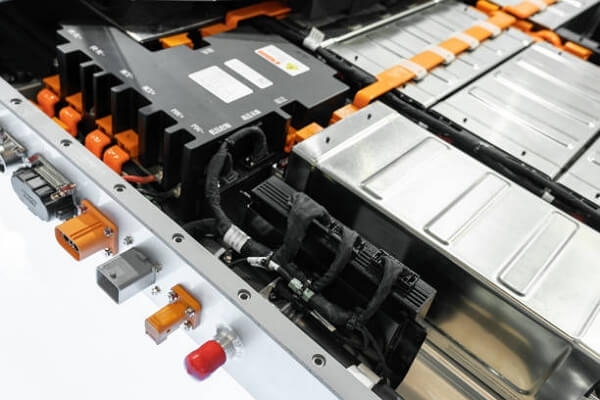
2.1 Pros and Cons of Batteries Connected in Series
As discussed earlier, voltages are summed up while the amp-hour remains the same when you connect batteries in series. Therefore, thinner wires can connect the batteries because there is a lower current draw and the voltage drop across the system is lesser than in a parallel connection. Another advantage of wiring batteries in series is that it is easy to build, and you can quickly detect if one of the batteries is dead or faulty.
To avoid some batteries depleting faster than others, you should ensure that all the batteries have the same capacity rating. The main disadvantage of wiring batteries in series is that the system will no longer provide power if one of your batteries is bad. Batteries connected in series will provide a higher voltage. Therefore, you cannot connect a low-voltage appliance to the system.
Pros:
- √ It is easy to build and understand
- √ You can connect batteries with thinner wires
- √ Repair is easy to carry out
Cons:
- √ System runtime is lower.
- √ The system goes off if one battery is faulty
- √ A converter is needed to achieve lower voltages
2.2 Pros and Cons of Batteries Connected in Parallel
Connecting batteries in parallel increase your runtime while the voltage remains the same. So, if you want a longer runtime, you can connect your batteries in parallel. For instance, connecting two batteries in parallel will provide a double runtime; three batteries will triple your runtime, and so on.
Another advantage of batteries connected in parallel is that other batteries in the system will continue to provide power even if one of the batteries is faulty.
The downside of parallel connection is that there will be a higher current draw because the system voltage is low. Since there is a higher current draw, there will be more voltage drop, requiring you to use thicker cables for the connection. Another disadvantage of parallel wiring batteries is that the system takes longer to charge.
Pros:
- √ The system runtime is improved
- √ Each battery gets an equal amount of voltage
- √ The system continues to provide power if one battery is faulty
Cons:
- √ There is a higher current draw
- √ Thicker wires are needed for the connection
- √ The system may take a longer time to charge
3. Serial vs Parallel Battery, Which is Better?
Both serial and parallel batteries are better depending on the purpose you want to use them for. So, it’s best to choose the one suited for the purpose you want to use it for. For instance, you should consider the needs of the appliance you want to power before you decide which is better between wiring batteries in parallel vs series.
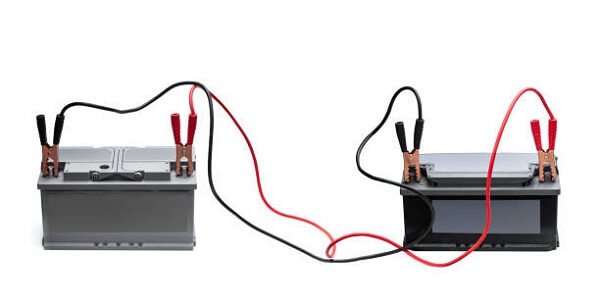
3.1 Suitable Usage Scenarios for Serial Batteries
Connecting batteries in series will only increase the voltage while the current remains the same. So serial batteries are more suitable when you need to improve the voltage capacity to support an application that requires higher voltages.
If you need to power a solar inverter system that requires 48V, you can connect four 12V 200Ah lithium ion batteries in series to reach the required voltage. One main disadvantage is that you will need a converter if low voltage is needed.
3.2 Suitable Usage Scenarios for Parallel Batteries
Connecting batteries in parallel will only increase the ampere ratings while the voltage remains unchanged. So, parallel batteries are more suitable when you need to increase the amp-hour capacity but not the voltage.
Connecting your solar batteries in parallel will help to improve the total runtime of your solar inverter system. Therefore, you can power your appliance for an extended period. One main disadvantage is that solar batteries connected in parallel may charge slower due to the increased ampere rating.
4. How to Connect Batteries in Series and Parallel
Before you set up a multiple-battery system, you need to know the target voltages and battery ampere hours. Knowing this will help you determine the number of batteries you need to connect to achieve your target. Also, it will help you decide which will be more suitable for you, between serial vs parallel battery.
4.1 How to Connect Batteries in Series
Before you start connecting batteries in series, make sure you check for equal capacity ratings. Connecting batteries with different capacity ratings is dangerous and may eventually damage your batteries. Here is the step-by-step guide to connecting your batteries in series.
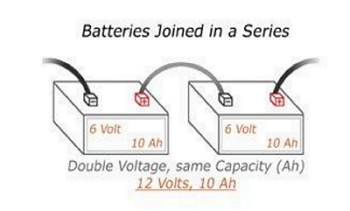
- Step 1. First, you must arrange the batteries closer to each other to reduce the voltage drop across the system.
- Step 2. Connect the first battery’s negative terminal to the second battery’s positive terminal.
- Step 3. Continue this process until you connect all the batteries.
- Step 4. Measure the system’s overall output voltage and ampere to see if it meets your specifications.
4.2 How to Connect Batteries in Parallel
The first thing you need to do before you connect your batteries in parallel is to confirm the capacity ratings of your batteries. Ensure that all the batteries have the same ampere and voltage ratings. Here is a step-by-step guide to connecting your batteries in parallel.
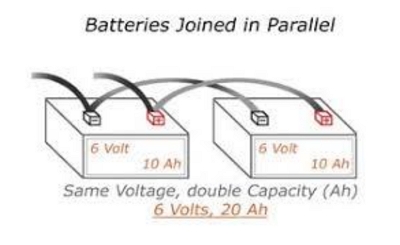
- Step 1. First, ensure that the batteries are arranged closer to each other to prevent excessive voltage drop across the system.
- Step 2. Connect the first battery’s negative terminal to the second battery’s negative terminal. Continue the process until you connect the negative terminal of all the batteries.
- Step 3. Repeat the same process for the positive terminals.
- Step 4. Measure the system’s overall output voltage and ampere to see if it meets your specifications.
- Step 5. If it meets your exact specification, you can now connect the negative terminal of the last battery in the system to the negative terminal of your appliance.
- Step 6. Also, connect the positive terminal of the system’s last battery to your appliance’s negative terminal.
Note: Before connecting batteries in series vs parallel, check the battery’s manufacturer manual to know if the batteries can be connected in series vs parallel.
5. Reliable Lithium Battery Supplier That Provides Custom Services
Since it’s challenging to connect the batteries to make the battery voltage and current suitable, it would be a better alternative way to customize lithium batteries to meet your exact needs.
Polinovel provides fully customized lithium batteries for different fields of application, including RV trailers, sailboats, electric boats, solar systems, and various residential applications. These products have a minimum of 10 years of life span. As a reliable China lithium battery manufacturer, they maintain 100% global standards compliance and follow the quality first policy to ensure the safety of batteries produced in the factory.

In addition, Polinovel is a leading Chinese lithium battery company that provides a full range of customization services that meet your exact specification, function, appearance, and brand info. They manufacture lithium batteries considering (learn: AGM vs. Lithium: 6 Differences to Consider) their safety, longevity, durability, and broad temperature range. You can also learn more about Polinovel lithium batteries here.
Conclusion
Batteries are connected in series to improve the overall voltage rating, while batteries are connected in parallel to increase the overall current rating. It would help if you considered your needs before you decide which is better to connect batteries in series vs parallel.
Several factors must be considered before setting up a multiple-battery system and connecting the batteries to make the battery voltage, and current suitable takes much work. Consider choosing Polinovel long-lasting and top-quality lithium batteries to avoid this stress. Polinovel provides complete customization services that meet your exact specification and brand info.
Contact Polinovel today to help find the best battery for you!

